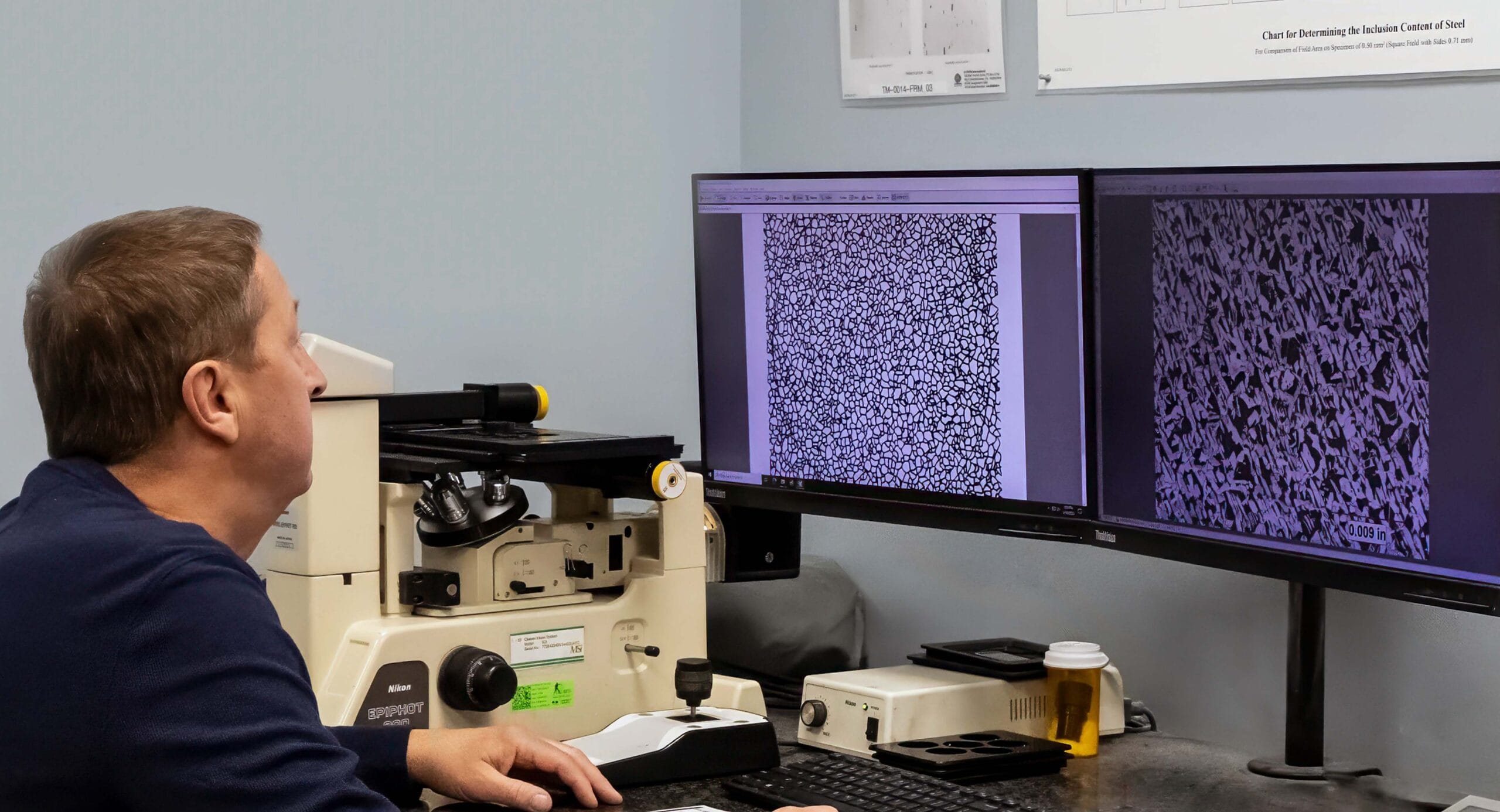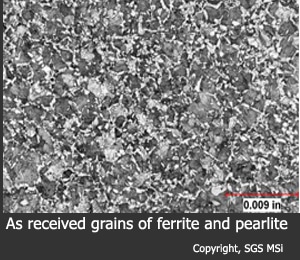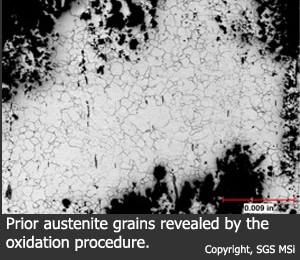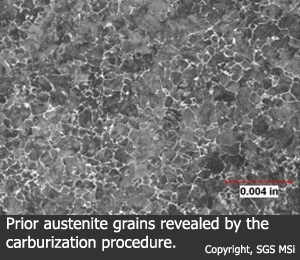
Metallurgical Services
ASTM E112 Grain Size Examination
Using ASTM E112 as our accredited test specification, and an optical microscope, we can determine the average grain size in metallic materials such as plain carbon steels, alloy steels, stainless steels, cast irons, and titanium alloys. Grain size can be an important factor in the mechanical properties of materials, and typically a finer grain size can increase hardness and improve yield strength.
Contact us today to learn more about our metallurgical services.
Grain Size Examination
 In an “as-received grain size examination”, we prepare metallographic specimens from the sample without any additional treatment. For example, an as-received grain size examination can be performed for stainless steels or carbon/alloy steels that haven’t been quenched.
In an “as-received grain size examination”, we prepare metallographic specimens from the sample without any additional treatment. For example, an as-received grain size examination can be performed for stainless steels or carbon/alloy steels that haven’t been quenched.
 In an “austenitic (oxidation) grain size” examination, we prepare carbon/alloy steel metallographic specimens from the sample by heat treating the specimens and quenching them in water. Oxidation grain size examinations are typically performed on quenched and tempered carbon/alloy steels with high carbon content. This method is necessary to bring out grains that otherwise could not be detected in the quenched condition.
In an “austenitic (oxidation) grain size” examination, we prepare carbon/alloy steel metallographic specimens from the sample by heat treating the specimens and quenching them in water. Oxidation grain size examinations are typically performed on quenched and tempered carbon/alloy steels with high carbon content. This method is necessary to bring out grains that otherwise could not be detected in the quenched condition.
 In a “McQuaid-Ehn (carburizing) grain size” examination, we prepare carbon/alloy steel metallographic specimens from the sample by surrounding the specimens with a carburizing compound, heat treating them, and slowly furnace cooling them. This method is utilized mainly for quenched and tempered carbon/alloy steels with low carbon content.
In a “McQuaid-Ehn (carburizing) grain size” examination, we prepare carbon/alloy steel metallographic specimens from the sample by surrounding the specimens with a carburizing compound, heat treating them, and slowly furnace cooling them. This method is utilized mainly for quenched and tempered carbon/alloy steels with low carbon content.
Grain Size Test Methods & Specifications
The following is a listing of specifications that are in accordance with our A2LA and ISO accreditation.
-
- ASTM E112 Standard Test Methods for Determining Average Grain Size
- ASTM E1181 Standard Test Methods for Characterizing Duplex Grain Sizes
-
-
- ASTM E112 Standard Test Methods for Determining Average Grain Size
- ASTM E1181 Standard Test Methods for Characterizing Duplex Grain Sizes
-
